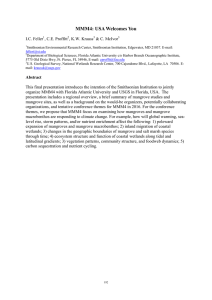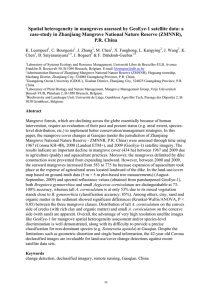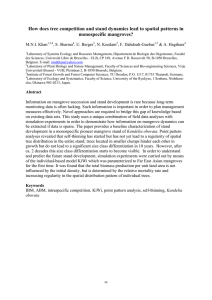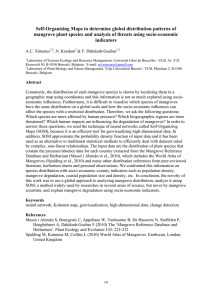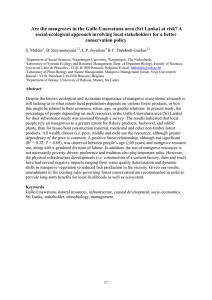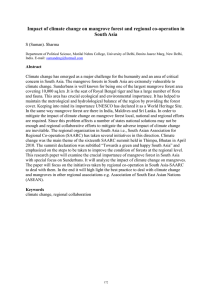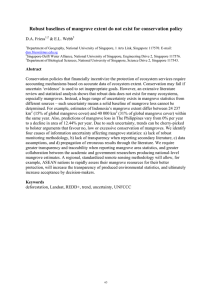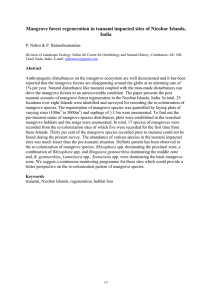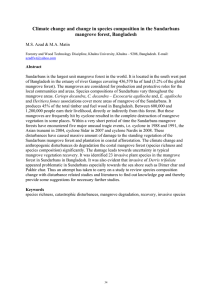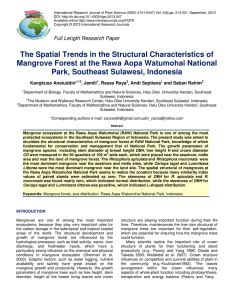Modern landscape process of mangrove wetlands based on retroactive
advertisement
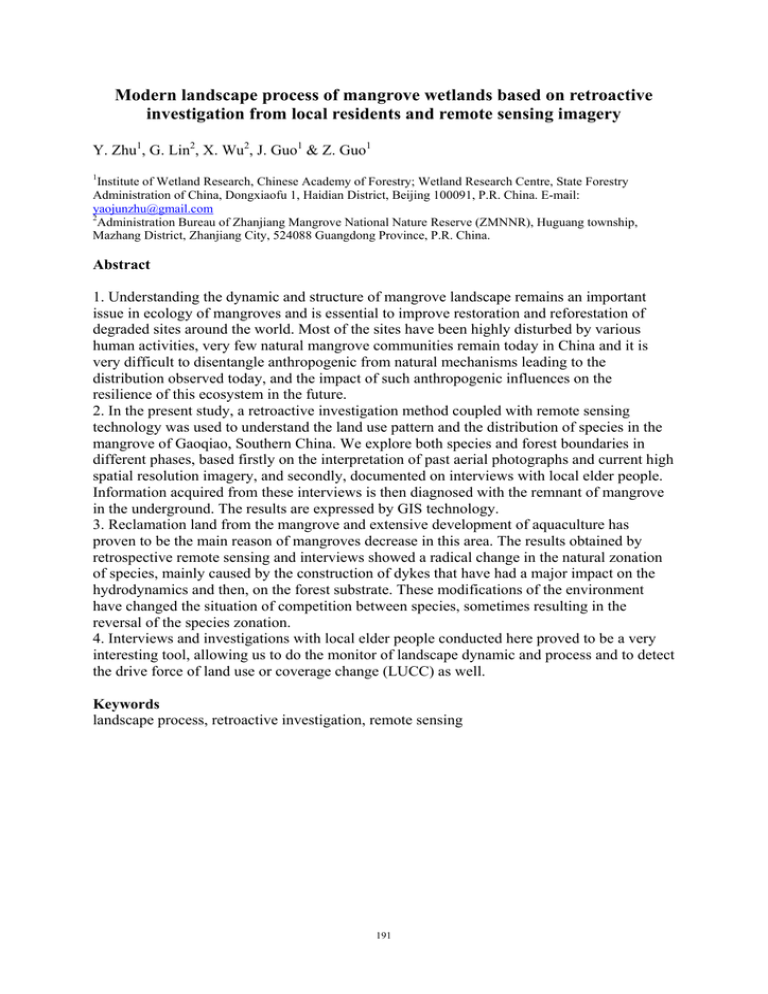
Modern landscape process of mangrove wetlands based on retroactive investigation from local residents and remote sensing imagery Y. Zhu1, G. Lin2, X. Wu2, J. Guo1 & Z. Guo1 1 Institute of Wetland Research, Chinese Academy of Forestry; Wetland Research Centre, State Forestry Administration of China, Dongxiaofu 1, Haidian District, Beijing 100091, P.R. China. E-mail: yaojunzhu@gmail.com 2 Administration Bureau of Zhanjiang Mangrove National Nature Reserve (ZMNNR), Huguang township, Mazhang District, Zhanjiang City, 524088 Guangdong Province, P.R. China. Abstract 1. Understanding the dynamic and structure of mangrove landscape remains an important issue in ecology of mangroves and is essential to improve restoration and reforestation of degraded sites around the world. Most of the sites have been highly disturbed by various human activities, very few natural mangrove communities remain today in China and it is very difficult to disentangle anthropogenic from natural mechanisms leading to the distribution observed today, and the impact of such anthropogenic influences on the resilience of this ecosystem in the future. 2. In the present study, a retroactive investigation method coupled with remote sensing technology was used to understand the land use pattern and the distribution of species in the mangrove of Gaoqiao, Southern China. We explore both species and forest boundaries in different phases, based firstly on the interpretation of past aerial photographs and current high spatial resolution imagery, and secondly, documented on interviews with local elder people. Information acquired from these interviews is then diagnosed with the remnant of mangrove in the underground. The results are expressed by GIS technology. 3. Reclamation land from the mangrove and extensive development of aquaculture has proven to be the main reason of mangroves decrease in this area. The results obtained by retrospective remote sensing and interviews showed a radical change in the natural zonation of species, mainly caused by the construction of dykes that have had a major impact on the hydrodynamics and then, on the forest substrate. These modifications of the environment have changed the situation of competition between species, sometimes resulting in the reversal of the species zonation. 4. Interviews and investigations with local elder people conducted here proved to be a very interesting tool, allowing us to do the monitor of landscape dynamic and process and to detect the drive force of land use or coverage change (LUCC) as well. Keywords landscape process, retroactive investigation, remote sensing 191

